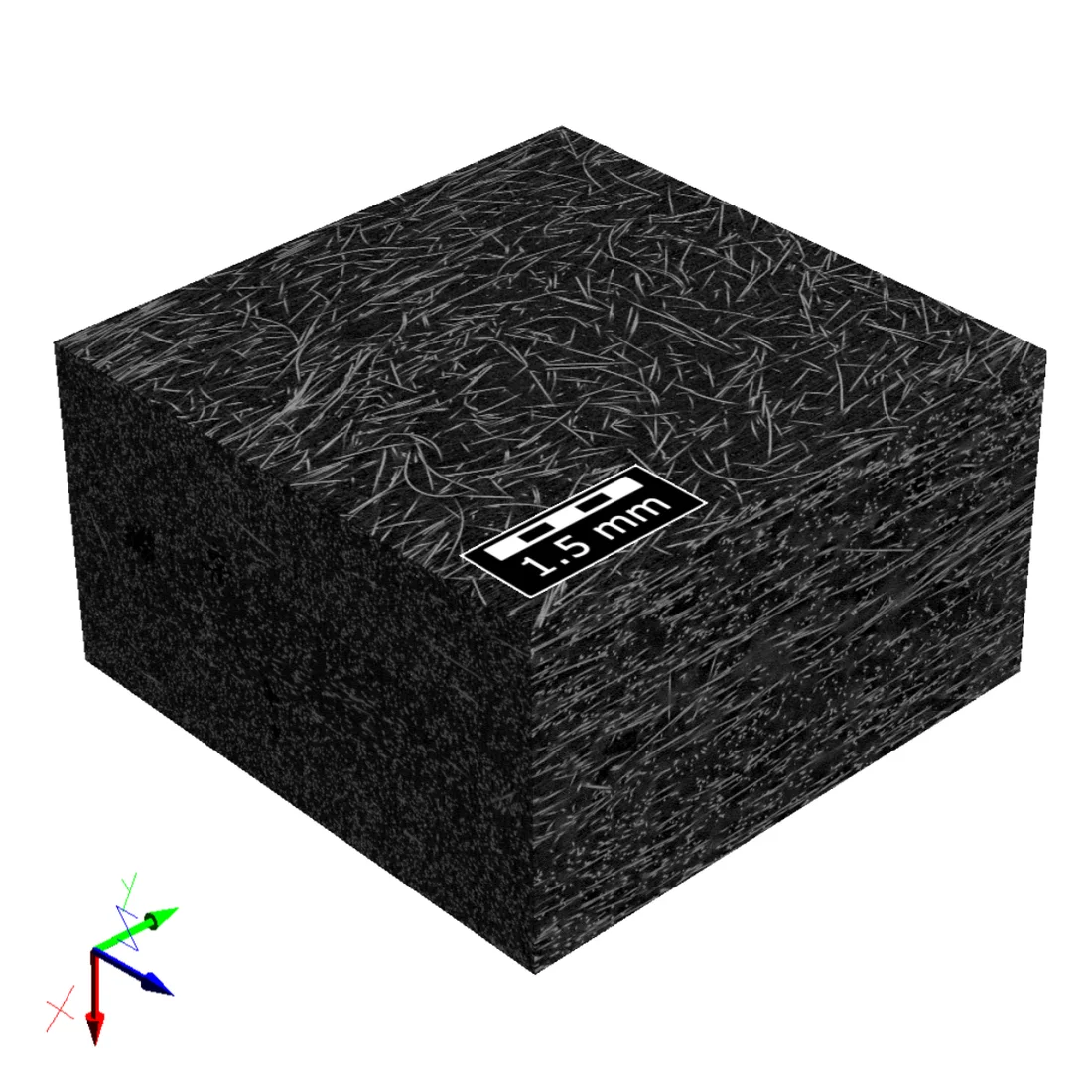Analysis of a Long Fiber Reinforced Thermoplastic
Import of a µCT scan, identification of single fibers, pore analysis and prediction of stiffness
Fiber-reinforced composites play an increasingly important role in lightweight applications. Among these composites, short and long fiber-reinforced thermoplastics are highly popular as they combine comparably low material cost, efficient production processes, e.g. injection molding, and good mechanical properties, especially if long fibers are used.
These materials present a complex microstructure with two material phases (fibers and polymer) and usually, an unwanted third phase (pores). Additionally, the manufacturing process itself influences the microstructure e. g. by changing the fiber orientation or the fiber length. In injection molding, the filling of the mold leads to a characteristic layer structure, which in the simplest case, consist of two outer regions and a core. In the outer regions, high shear velocities lead to an alignment along the flow direction. The slower, laminar flow in the core region causes a transverse to random orientation of the fibers. This effect produces complex fiber orientations in the composite. Using µCT-scans , the fibers and pores in the resulting microstructure can be analyzed thoroughly to better understand the microstructure of injection molded materials.
In this study, a µCT-scan of a glass fiber reinforced polypropylene made by the Leibniz-Institut für Verbundwerkstoffe GmbH (IVW) was analyzed. It has a fiber volume content of 13%, a tensile modulus of 6 GPa, and an elongation at break of 2.5% [1]. The specimen was an injection molded type 1A shouldered test bar and mechanical testing was performed according to DIN EN ISO 527-1 to -5 [1].
- Import and segmentation of the µCT scan
- Identification of single fibers by FiberFind-AI
- Identification of the pores using PoroDict
- Analysis of mechanical properties with ElastoDict
You can also easily apply these steps to your material in GeoDict.
Approach
In a first step, the gray-value images of the scan were imported in GeoDict for segmentation. A non-local means filter was applied (patch radius: 1, search radius: 3, filter strength: 0.2) to improve the image quality. The segmentation led to a fiber volume content of 13.2% and a significant number of pores, namely 1.3%. The resulting model has a size of 1500x1500x800 voxels.



